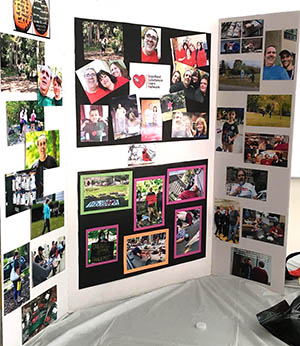
BSUN Reducing Harm One Connection at a Time – A Q&A with Shawna Bray
Editor’s note: In the third in our series of Q&As on Doing Things Differently, Tara Buchanan spoke with Shawna Bray, a member of Brantford Substance Users Network (BSUN). We inquire into the new ways in which BSUN is engaging and collaborating with the community to foster strong and connected communities. We explore the creative thinking that brings energy to the complexity of being and doing in community.
What are some of the new ways of doing things that you have seen within your team or within your program?
We go into the community and do our outreach. We hand out NARCAN®, we hand out harm reduction supply kits that we make. We go all around downtown Brantford and approach people who are vulnerable. It could be anyone suffering from homelessness or addiction. We are basically a comforting presence. We engage with people. We do needle sweeps around the community as well.
What is the most inspiring thing you’ve experienced while working on this project?
The most inspiring thing for me is when I’m talking to someone on the street, they are humble, they are grateful that we’re engaging, and they thank me for even bringing water. To me that’s inspiring because I’ve had a few people say to me that they’ve been shunned in the community with certain people, so just to see how they react when we’re engaging is inspiring to me, to know that they are grateful we’re around.
What are some of the ideals that BSUN holds that you think are new or unconventional in Brantford?

A Brantford Substance Users Network (BSUN) information board shared at Community Living Brant’s fourth annual ABCD (Asset-Based Community Development) Symposium in May.
We are strong advocates of harm reduction. We support supervised consumption sites, safe supply, needle exchanges, and we fight for the rights of substance users. And we support the decriminalization of drugs.
What are some of the dynamics you’re noticing in the community when implementing these new and creative approaches?
Although there are challenges, as per any community engagement, I notice that there are many other groups that are open and reaching out to us. We’re building partnerships within the community with partners who want to help in any way they can. I think that’s wonderful. We’re building rapport with different partners and I love that.
So what are you hearing about or seeing in your work that inspires you?
What I’m hearing and seeing is the effects of what we do on people. I come across people that have said they feel more comfortable, they feel welcomed. I’ve come across a few people that have wanted to reach out for resources after engaging with us because they’re not feeling judged. I would love to see more of that.
I would love to see more rapport between people and partners within the community. To see people who are not in groups start to get involved in building rapport and feel that everyone, all of us, are all human.
All of us are at risk of being homeless because of the pandemic and inflation. At the end of the day anyone can be homeless, anyone could be in that situation. I think that compassion is the most important thing as well as understanding and having an open mind.
If we could all come together — not just the community, the government, or the city — but everywhere, then we could start to make a difference and help save more lives.
What do you think it would take to make this possible?
Educating people about addictions, about mental health, about stigma, that’s the biggest thing that plays a part in how people perceive addiction and mental illness. I’d love to see more education, group meetings with other organizations, and more media attention to it — just get out there and see how many people can be reached.
I’ve noticed over the past few years that there are a lot of people that I’ve come into contact with that used to have different views. And now their perspective has shifted and they say, “Oh, I didn’t know it was like this. I feel different about my views in the past few years, and everything’s changed”. So it’s about educating people.

Shawna Bray
If that were to happen, what do you feel would be possible in the future?
If we could all come together — not just the community, the government, or the city — but everywhere, then we could start to make a difference and help save more lives. That’s the most important thing, in my opinion, is to help save lives.
Is there anything that you would like to share that you don’t feel you shared yet?
If anyone ever wants to reach out to us we have a page and a group Brantford Substance Users Network-BSUN. On the page there’s a phone number and anyone can feel free to contact us. We’re open to anybody joining our group, anyone with personal lived experience, active users, non-active users and advocates. Feel free to reach out to us anytime.
Lead photo cutline: Shawna Bray (left), member of the Brantford Substance Users Network (BSUN), Dawn Girard, and Dawn’s grandson Carter (right) speak at Community Living Brant’s fourth annual ABCD (Asset-Based Community Development) Symposium in May of this year about BSUN and share stories about why the work is important to them.
Join our mailing list to to receive a bi-weekly newsletter containing invitations and media related to Community Living Brant.
Leave a reply

Leave a reply